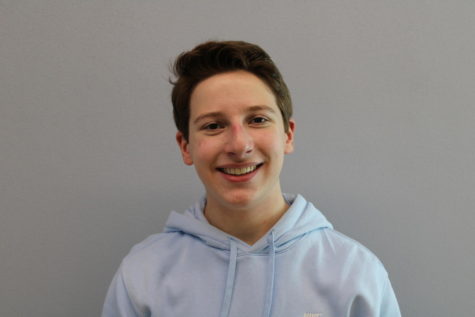Writing Checks, Checking Privilege
Column on privilege at Stevenson High School
It’s an understatement to say that Stevenson is renowned for its seemingly limitless resources. We have entire Student Support Teams, a 15:1 student-to-teacher ratio, 150+ extracurricular activities, meditation rooms, constant construction of new buildings and two whole cafes along with a freaking SMOOTHIE BAR. O’Hare probably looks to us for inspiration, along with other schools.
On a more serious note, our school’s privilege is a step ahead of the rest, especially in terms of academics. According to the Illinois Report Card, Stevenson’s Operating Expense Per Student is a whopping 21,525 dollars, around 50% more than the already sizable state average of 14,492 dollars.
And we shouldn’t forget that we were recently ranked the top district in the nation based on factors like our high school, feeder schools and local towns as well. Families move to our region to indulge in Stevenson’s prestige.
OK, we’ve established that we’re privileged. But what does it all equate to? Are students better off with the resources that Stevenson offers? National research suggests the answer is yes.
The Center for American Progress—which has synthesized research regarding the relationship between school funding and impact on students—puts it bluntly: “money matters for student achievement.” One paper released by the National Bureau of Economic Research elaborates on the impact of funding, reporting that a “10% increase in per-pupil spending each year for all twelve years of public school leads to 0.27 more completed years of education, 7.25% higher wages, and a 3.67 percentage-point reduction in the annual incidence of adult poverty.” This funding was even more effective for students of low-income families. When school districts used this extra funding wisely, the Center also found that test scores and graduation rates improved.
Yet the abundance of Stevenson’s resources raises ethical questions. Most notably, does Stevenson have an obligation to give back? If possible, I feel that there is value in the school returning the plethora of funding to the district and to external communities rather than spending money on potentially unnecessary items.
Stevenson seems to be aware of this value too. The school has set up charitable organizations, such as the Stevenson One Foundation which assists families who have been hit hard economically by the pandemic. Likewise, Stevenson’s new Field House extension will be providing a public gym to the local area, and World’s Fair gave the district community access to an amazing exploration of culture. All of this, combined with the extensive PREP program for younger children in the area, makes it clear that Stevenson is pushing to enhance the surrounding community as much as it is bolstering student education.
In terms of decreasing the gap between the funding of our school and other high schools, Stevenson might not have much legal room to work with. Nonetheless, it is noteworthy that Stevenson endorses programs to assist neighboring districts, such as through National Honor Society where students currently have the opportunity to tutor students at Jack London Middle School. In the same vein, the annual Give-A-Thon program does a tremendous job raising funds for local underprivileged communities, providing families with plentiful toys, clothes, foods and gifts they might not be able to afford.
But what about students? Do we have an obligation to give back to other schools? Although it may be tougher for us to make as large of an impact, there are certainly ways students can get involved, such as holding fundraisers, school supply drives or maybe even lobbying public officials.
However, some students question the benefits of Stevenson’s extra resources altogether. Sure, the assets assist us with exploring our interests, improving our learning and preparing us for the future, but attending such a distinguished school can make students suffer from exceeding expectations.
It’s easy to see why this might be the case. Imagine being surrounded by peers who are in every club, put in extra work with their teachers, go to the ILC tutors religiously and visit the College and Career Center often. This “model” student isn’t even a model in Stevenson: it’s practically the standard. A student could be putting in full effort and still feel like they’re falling behind.
Some students also feel that the pressure extends beyond campus. Considering that parents move to the district with the intention of improving their child’s education, it can be expected that they also push their children to completely utilize the resources provided, leading to even greater stress.
Nevertheless, this take seems a bit pretentious to me. As students, never leaving the Stevenson bubble can make us forget what other high schools lack, and we can quickly lose gratitude for what we have.
Instead, our main responsibility should simply be to have gratitude for the resources our school grants us. Next time you grab an Iced Mocha from Jazzman’s (which is probably tomorrow), think about how ridiculous and amazing it is that you can buy fresh coffee in school. In fact, while you’re at it, pay attention to the Sodexo workers both behind the counter and everywhere around the school who take care of our messes behind the scenes each day and night. More importantly, be grateful for Stevenson’s guarantee of well-educated and highly-skilled teachers, along with the ability to seek academic tutoring and mental health counseling at any hour.
We get to experience a comfortable, luxurious school environment. We get to improve our knowledge with challenging learning experiences. We get to explore our passions and prepare for the future. We get to go to Stevenson.



